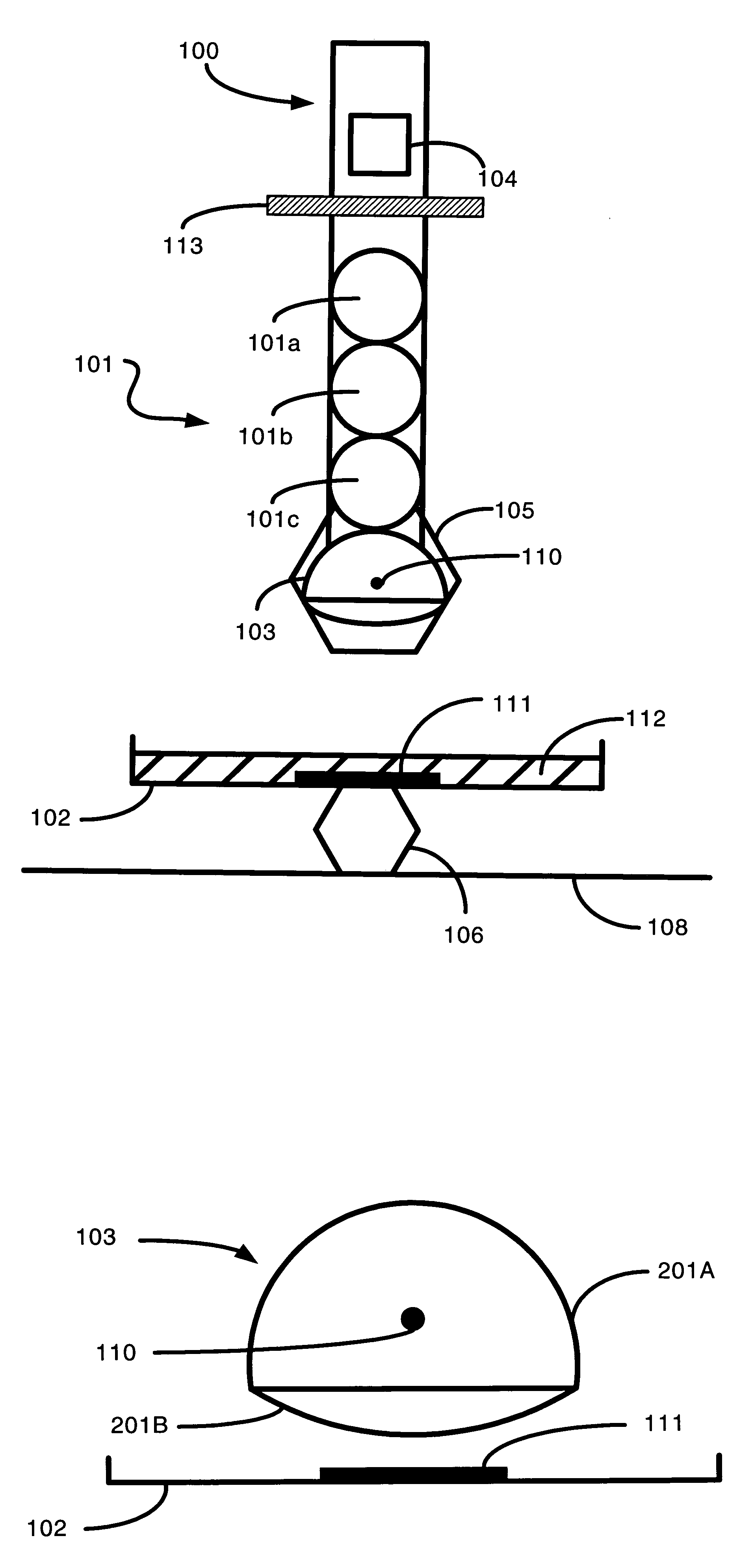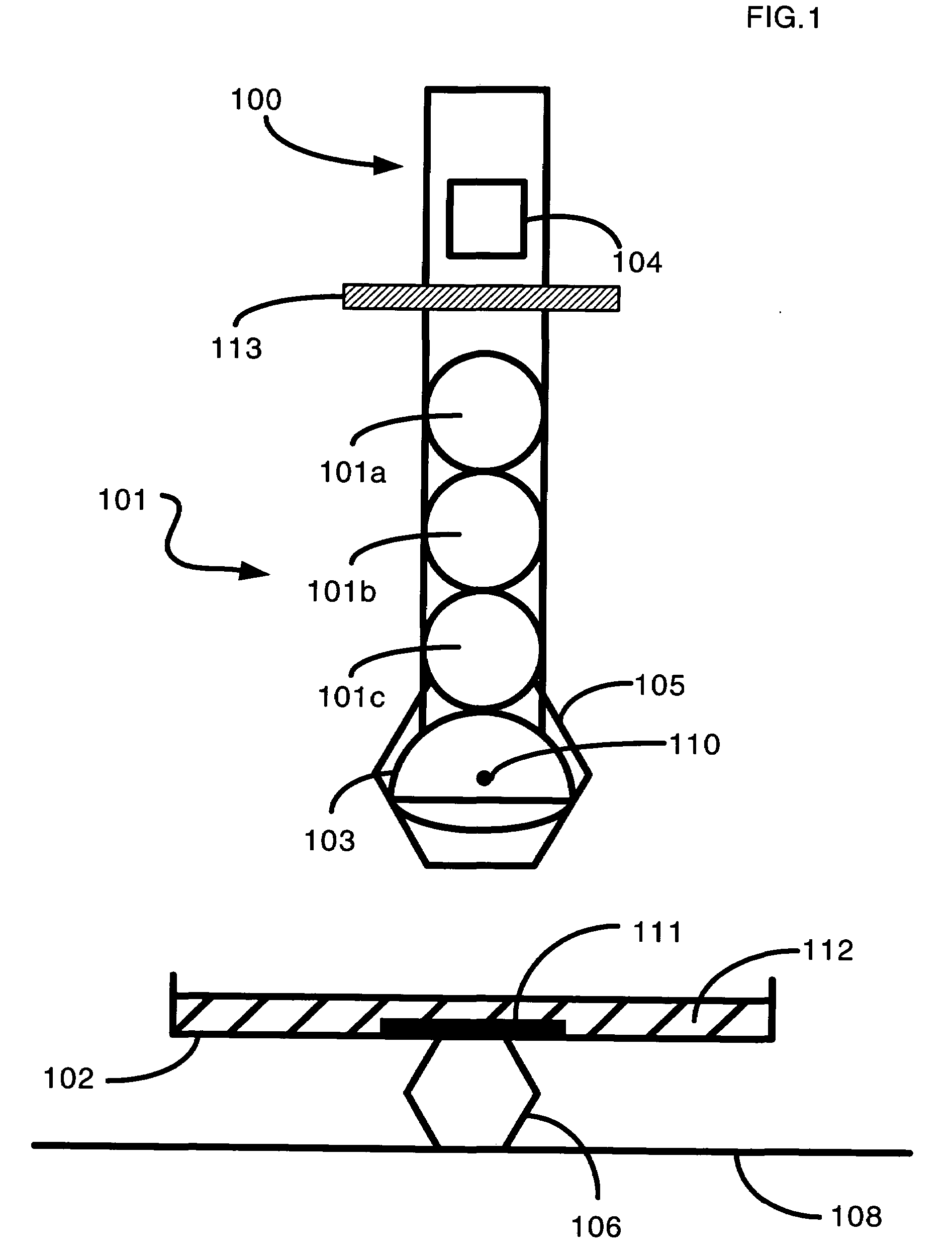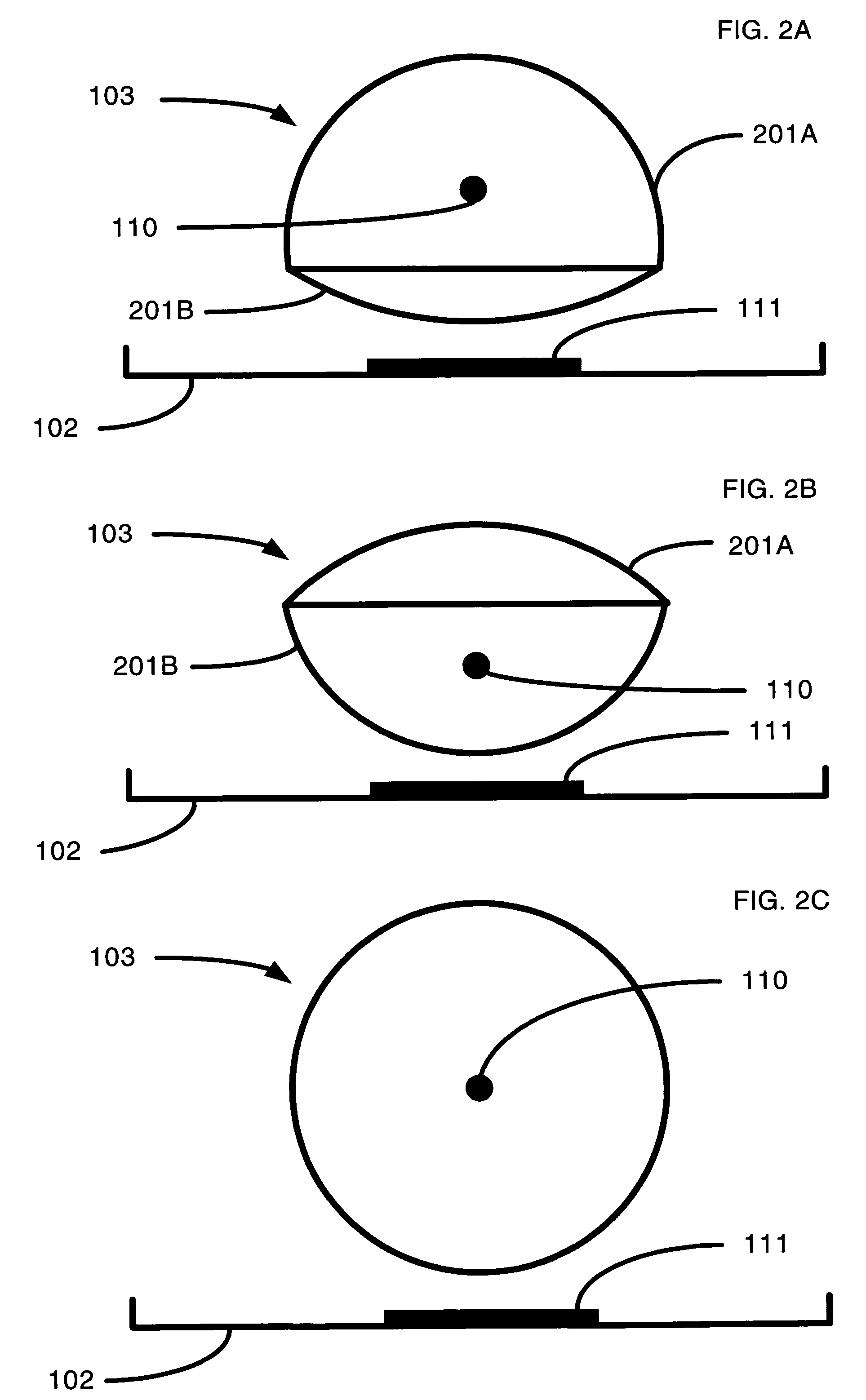Moving lens for immersion optical lithography
a technology of optical lithography and moving lens, which is applied in the field of optical lithography, can solve the problems of increasing the complexity of the problem, the computational requirements of the application used, and the manufacturers' struggle to maintain the precision necessary for useful operation, etc., and achieves the effect of reducing turbulence and air bubbles, minimizing air bubbles, turbulence, and other disruptions
- Summary
- Abstract
- Description
- Claims
- Application Information
AI Technical Summary
Benefits of technology
Problems solved by technology
Method used
Image
Examples
Embodiment Construction
[0022]The invention will be described in detail with reference to the following figures. It will be appreciated that this description and these figures are for illustrative purposes only, and are not intended to limit the scope of the invention. In particular, various descriptions and illustrations of the applicability, use, and advantages of the invention are exemplary only, and do not define the scope of the invention. Accordingly, all questions of scope must be resolved only from claims set forth elsewhere in this disclosure.
[0023]FIG. 1 is a side-view illustration of an embodiment of the overall invention. A frame 100 serves as a support structure to hold the various related components. Light source 104 is attached to frame 100 and projects the light through a photomask 113 and a lens system 101 having lens elements 101a, 101b, 101c and final lens element 103. Examples of light sources for light source 104 are excimer lasers and mercury arc lamps. Lens system 101a, 101b, 101c an...
PUM
| Property | Measurement | Unit |
|---|---|---|
| wavelength | aaaaa | aaaaa |
| relative horizontal velocity | aaaaa | aaaaa |
| angular velocity | aaaaa | aaaaa |
Abstract
Description
Claims
Application Information
 Login to View More
Login to View More - R&D
- Intellectual Property
- Life Sciences
- Materials
- Tech Scout
- Unparalleled Data Quality
- Higher Quality Content
- 60% Fewer Hallucinations
Browse by: Latest US Patents, China's latest patents, Technical Efficacy Thesaurus, Application Domain, Technology Topic, Popular Technical Reports.
© 2025 PatSnap. All rights reserved.Legal|Privacy policy|Modern Slavery Act Transparency Statement|Sitemap|About US| Contact US: help@patsnap.com



